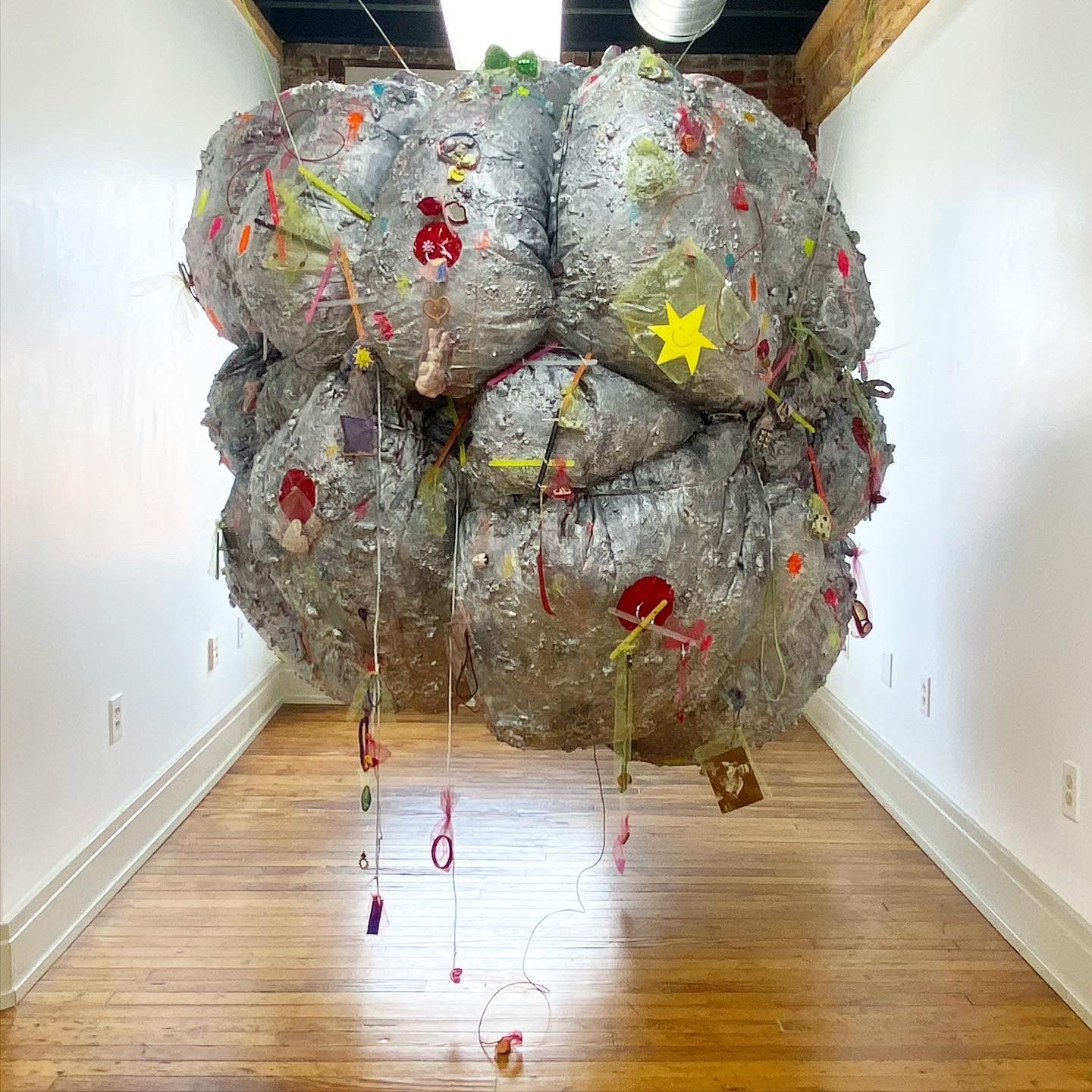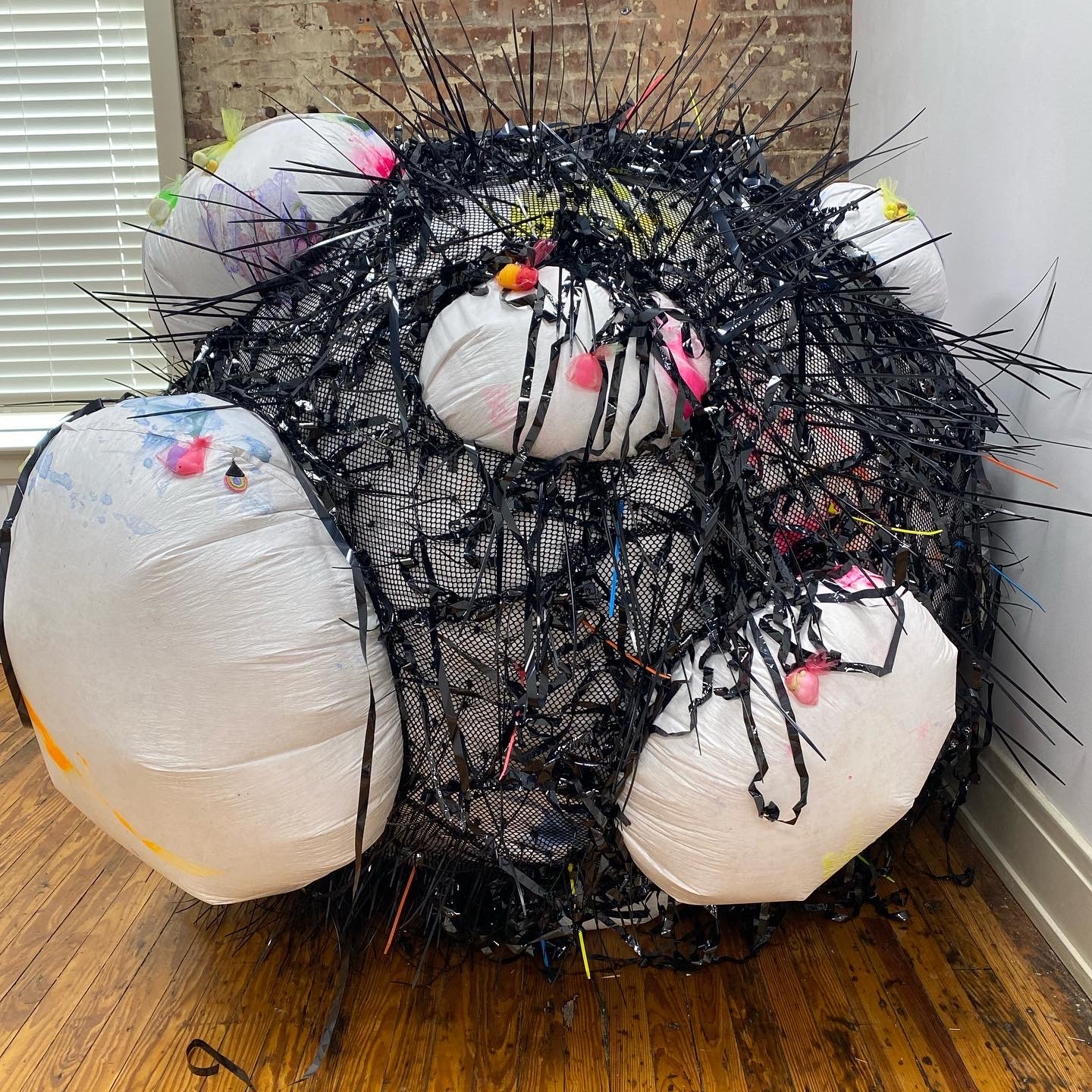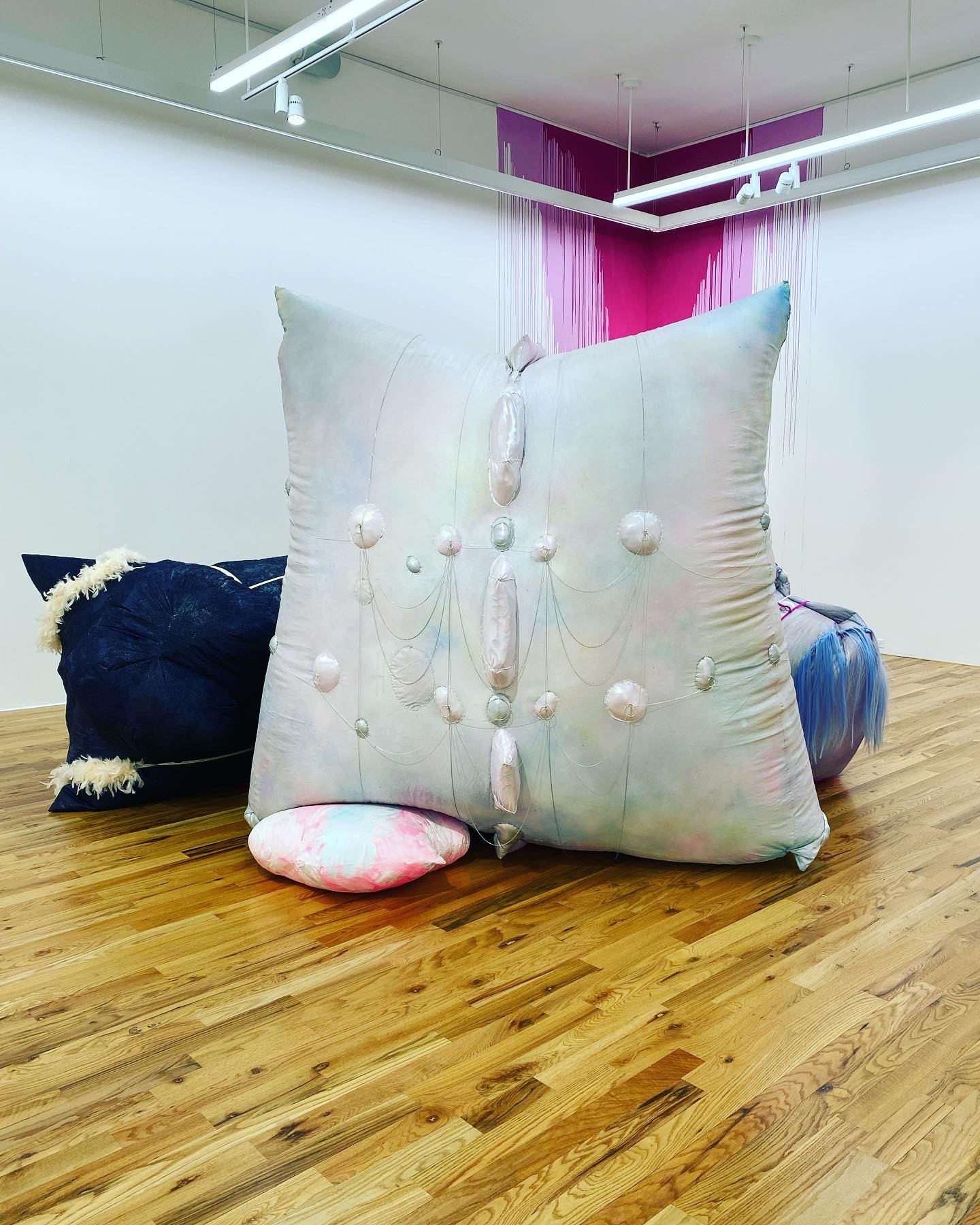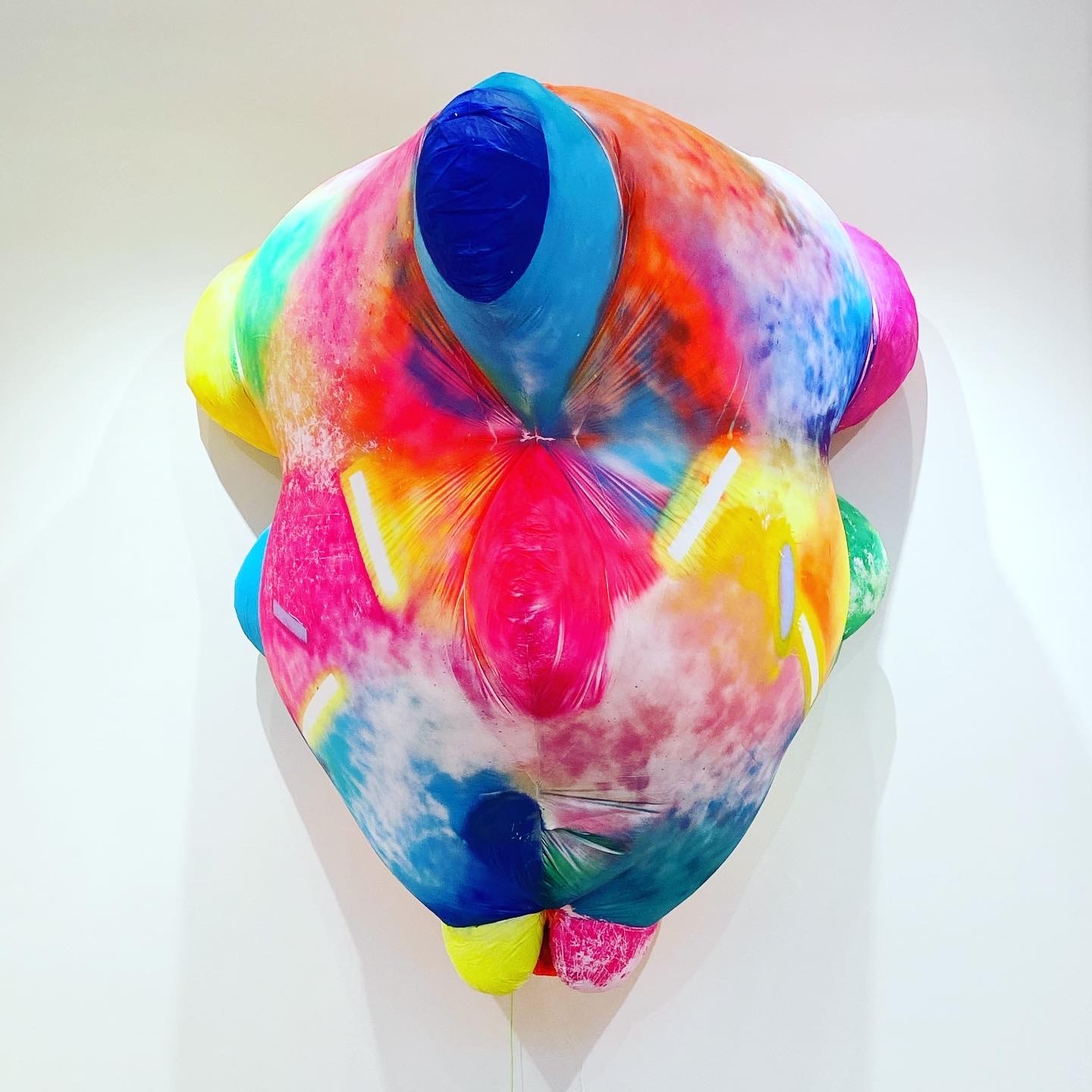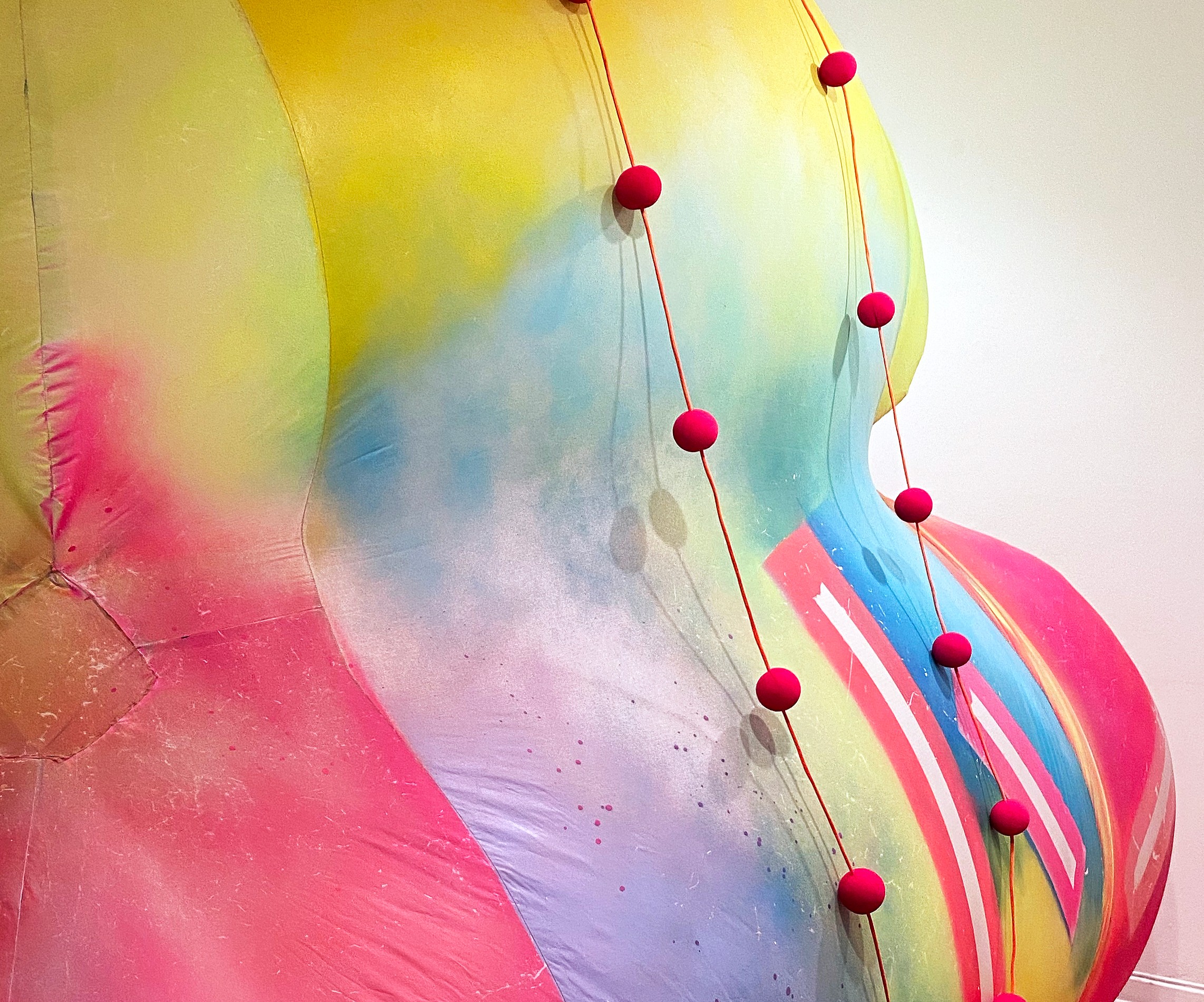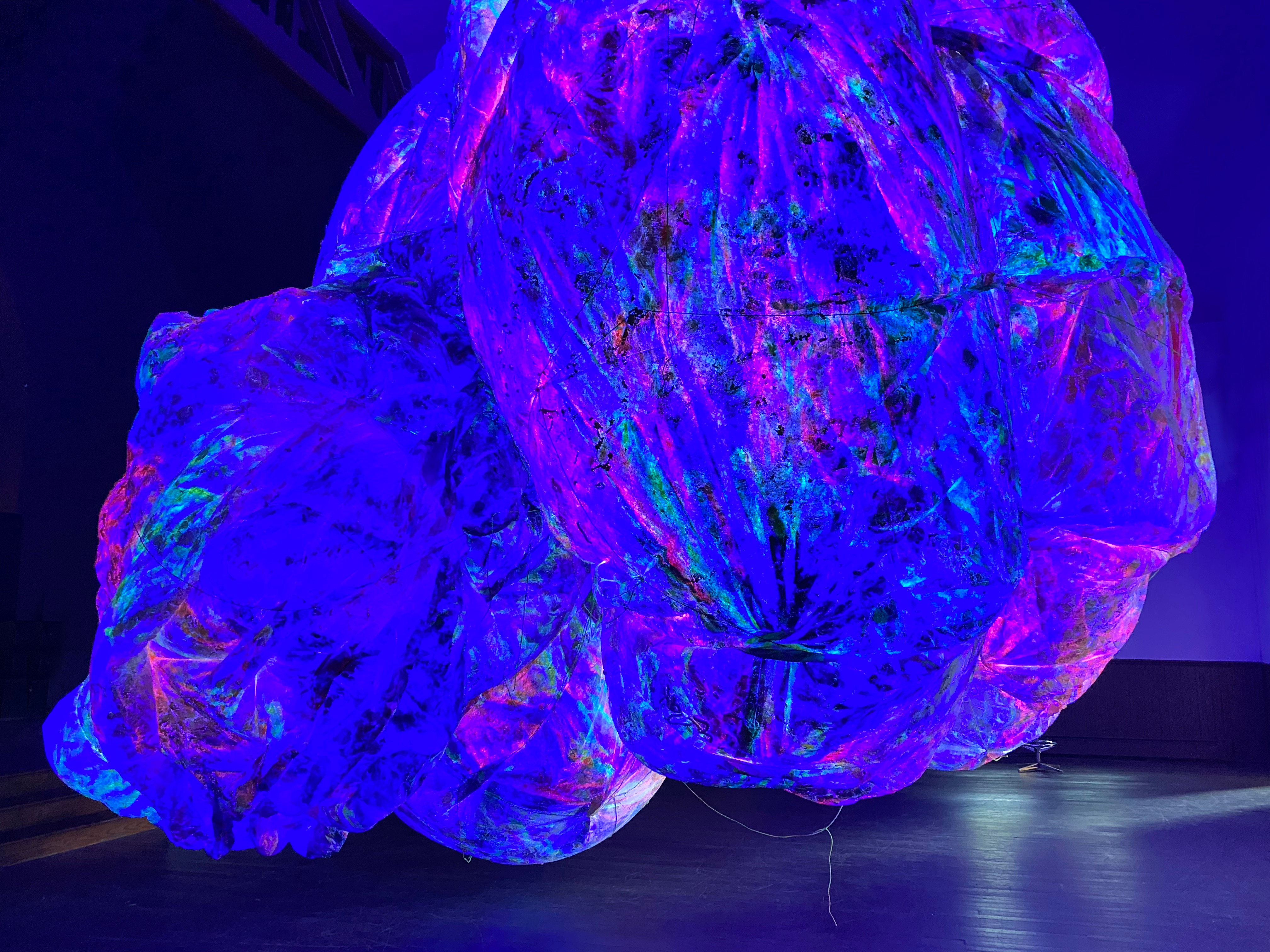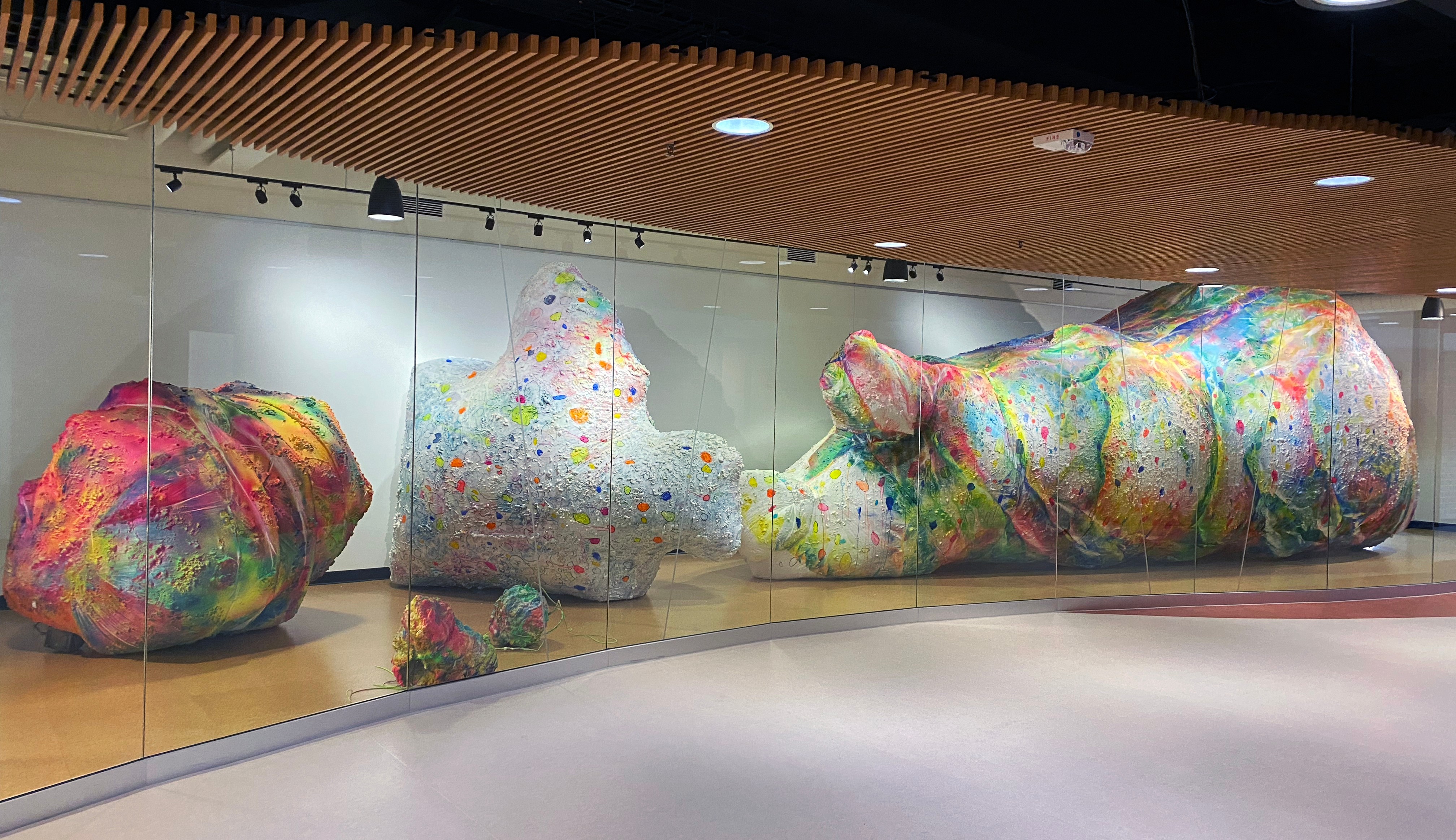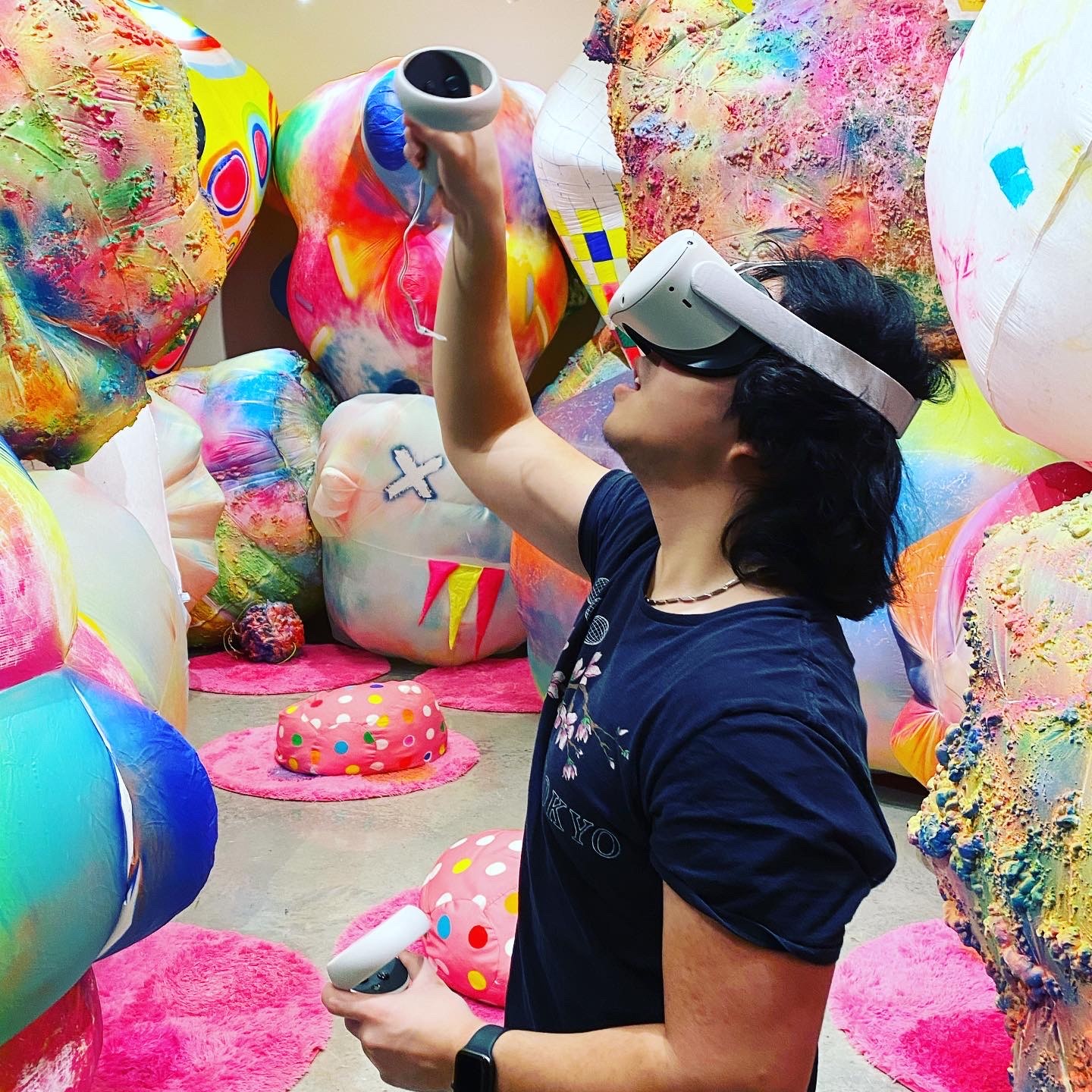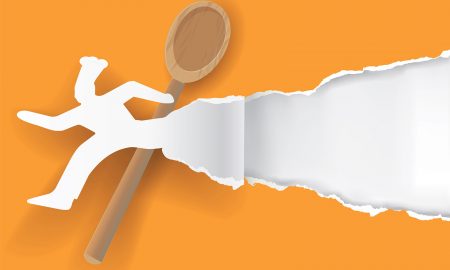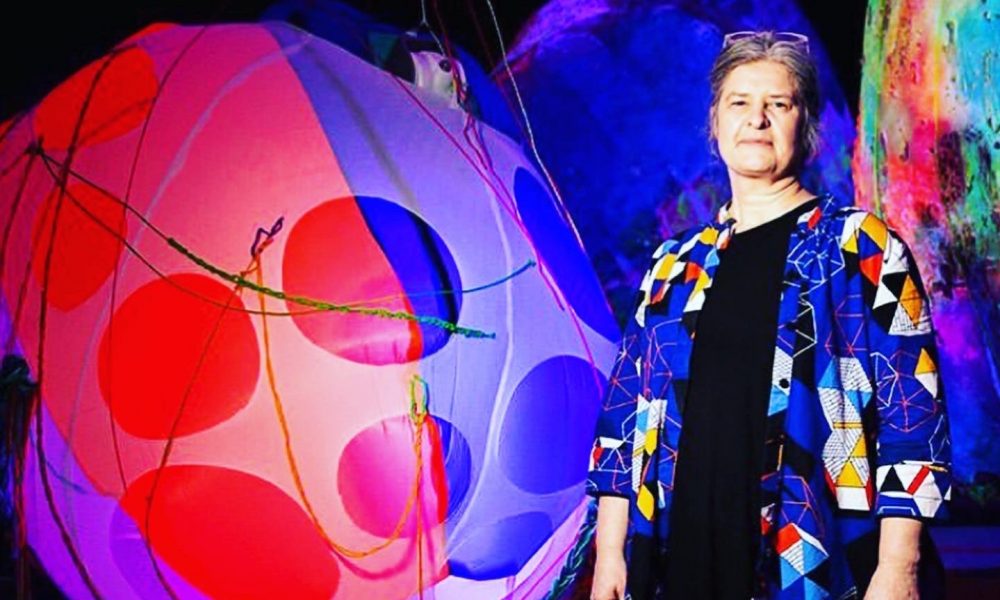

Today we’d like to introduce you to Claire Ashley.
Alright, so thank you so much for sharing your story and insight with our readers. To kick things off, can you tell us a bit about how you got started?
I was born and raised in Edinburgh, Scotland, and arrived in Chicago when I was 21. I have lived in the States now for 30 years (longer than I lived in my homeland, which is a scary thought!) My home and studio are in Oak Park, IL, where I live with my very old husband, three fabulous young adult offspring, two very smelly dogs, and three cats. I teach at the School of the Art Institute of Chicago in the Department of Painting and Drawing, the Department of Contemporary Practices (Foundations), and at Oxbow Summer School of Art in Saugatuck, MI.
I’m trained as a painter, but I’ve spent thirty years exploding the possibilities for painting. In general, my particular relationship to painting makes me want to push against its immense history, to use its’ essential power (color, surface, mark, image – all forms of communication) to infiltrate other media and material to create hybrids, to procreate without reserve, and in some mangled Darwinian way continue to exist forcefully in the universe, even if it’s existence is more like something out of an absurdist play (i.e., Ionesco’s ‘The Rhinoceros’).
I work with inflatable sculpture as the surface for painting to live and breathe, becoming a tattooed skin of sorts on a kind of hybrid body. These sculptural paintings also become performance costume and once kinetic, lumber through the landscape on twelve sets of legs. I am supremely lucky to be able to invent these absurd objects and have so much fun in the process!
You may have figured out that irreverent humor is a big part of my personality. My Scottish heritage has embedded a need for self-deprecating humor and an inability to take myself too seriously; I am a big fan of the Scottish comedian Billy Connolly. And my 80s upbringing in Edinburgh infused my sensibility with the neon color palette and dance beats of Soft Cell, Banarama, Depeche Mode, and Wham, and with my sci-fi Star Trek obsession. I spent my summers sailing off the west coast of Scotland with my family, which I realized recently has influenced my practice significantly in terms of the large swaths of billowing fabric I use, as has my love of the immense scale of the Scottish Highlands.
I’m sure you wouldn’t say it’s been obstacle free, but so far would you say the journey has been a fairly smooth road?
Life is complicated, so yes there have been many struggles. Moving to a different country introduced me to an extremely different artistic aesthetic, variety of color influences, and pace of life and work. Having kids slowed down my artist production for a considerable amount of time but imbued the work afterwards with a new urgency. And financial limitations have consistently forced me to utilize an independent sense of production and economy in my practice.
I think funding and other kinds of support is a primary issue for artists today. Canada understands that artists are doing an important job to enrich the culture of a place and therefore supports its’ artists substantially. America and the UK need to catch up to that kind of mentality, such that the classic commercial side of selling our work through a gallery is not the only way that we might be compensated for the work we do as artists. It has improved in the last few years, and I have to say that I am conscious of always asking for an artist’s stipend when I’m invited to show my work, but it still needs to be built into the fabric of the art world and government funding more.
I think in our current political and global moment, art and artists matters more than ever! It is a way of being hyper-observant – awake and aware. Art is both poetic and abstract, political and critical. Artists reflect critically on the zeitgeist and engage in the vibrancy of life through an entirely different lens than most people get to use. However, I do think contemporary art takes itself way too seriously… so much so that we lose viewers, so I think that contemporary artists must work harder to engage their public more without dumbing down their work.
As you know, we’re big fans of you and your work. For our readers who might not be as familiar, what can you tell them about what you do?
As mentioned previously, I make painted inflatable sculptures. These forms can exist as singular objects, site-specific architectural interventions, or costumes for absurd performances. I want humor to be upfront and personal in my work, and I like to think of the things I make as irreverent odd bodies of sorts and absurd self-portraits. I use humor, absurdity, empathy, and play as a foil for the monumental scale and abstract pattern in the work (people always want to touch or hug the sculptures or throw themselves onto them like a bounce house).
My work has been very influenced by watching my three kids grow up. They seem to evolve in parallel: from bounce houses, soft toys, and cartoons; to sci-fi, rock-climbing, dating, and dancing; work and life keep pace with one another. I make work about ecstatic life!
I work with inflatables for a number of reasons. My first introduction to the form was through watching my kids play on numerous bounce houses when they were little. The second introduction was through a co-teacher who taught a short inflatable exercise which inspired me to think about it as a solution to art making. I was excited about the potential to make large-scale sculptural forms that were soft and lightweight, that could be folded up when not installed (I have a very small studio, so storage is a premium), and that were implicitly playful and humorous. That initial interest led to discoveries in the studio about how they could then become surfaces to paint on. This was very important discovery for me because even though I am trained as a painter, I have never been content with painting on a flat surface or with a straight edge, it has always been a more physical and sculptural endeavor. So, this new hybrid painted form was so exciting to find. I should also say that I have an equally hard time with the traditions of monumental sculpture, i.e., heavy, static, monochromatic form. So, all of these factors made inflatables feel like a pretty perfect solution to the demands for my work.
One other note about the inflatable form: I find it compelling, as it exists in two states: both as flaccid skin and taught volume. I like to think of the polarities of form within these objects as metaphors for our bodies: inhaling/exhaling, taught/wrinkled skin, flaccid/erect organs, etc.
I want viewers to feel in awe of the sculptures scale relative to their own bodies in space, but that there is something uncannily recognizable in the forms. So lately, I’ve been trying to find moments where body scape (human, animal, and alien) and landscape (land, sea, and outer-space) meet in my work. I want people to recall the sense of wonder when looking at natural phenomena like mountains, caves, clouds, planets, the Macy’s Day parade, or the Pillsbury Dough Boy, but that they also sense something else in the experience. Something that rides the line between a tongue-in-cheek reference to Michelangelo’s ‘Creation of Adam’ in the Sistine Chapel, Spielberg’s “Close Encounters of the Third Kind” or “ET,” and “Star Trek” or “Ghostbusters” … I’m a bit of a sci-fi geek. These inspirations also get entangled with other curiosities that run the gamut from expandable foam, politics, cake frosting, feminism, lumpy bodies, and aliens of all kinds to neon pink, graffiti, and daft punk … the list goes on.
I am interested in creating democratic access to my work by utilizing a deliberately egalitarian and generous collection of humorous, visceral, and empathetic connections between the viewer and the object and formal entry points for multiple communities to engage with the work. I hope to create a sense of the uncanny within the sculptural forms, where they are recognized by the viewer as abstract and figural at the same time. The audience is an active participant in the exhibitions and performances I produce. They push against the forms, touch their surfaces, laugh at their incongruity, and sometimes enter into or dance within the forms themselves. In short, they complete the work.
Practically speaking, I use PVC-coated canvas tarpaulin and ripstop nylon as my materials because they are cheaper than traditional fine art materials, and when you work at the scale I do, you really have to take cost into consideration. On another level, I use readily available materials because I want the philosophical underpinnings of my work (democratic access) to be embodied by the material itself. So, using PVC-coated canvas tarpaulin (the material house painters use to protect floors), Rust-Oleum and Montana spray paint, duct tape, kids backpacks, and personal blower fans becomes one way to do that. My husband says I need to buy shares in Menards and Home Depot. And on a third level, I am interested in the magical, transformative alchemy that happens when these relatively unconnected and very mundane materials are brought together to make my particular version of painting and sculpture. In terms of its timeliness, and as I mentioned above, I link my material choices to both a desire to connect with multiple communities, whether art-trained or not, and to an implicit critique of the elitist nature of some sections of the art world (it’s intellect, it’s excess, it’s imbalance, etc.) which is also a reflection of a more global critique of capitalism. However, I also use it because the PVC-coated canvas holds air particularly well, and the paint sits on the surface in a very satisfying way to create ecstatically colorful, monumentally cartoonish, and uncanny figural sculptures.
I make a lot of drawings and sketches of possible silhouette shapes that might become sculptural objects. I don’t make models or macquettes but usually go straight to the full-scale object. There’s always an unknown component to the forms as I make them because going from flat to volume isn’t a science (the way I do it, anyway), so I usually consider the piece a success if there is a surprise when it gets inflated and if there is something that happens in the painting of it, I didn’t expect. This creates an energy or presence that is beyond me/beyond my control when I look back at the work. I get bored pretty quickly, so I often change the way a piece is installed each time I show it such that I see if with fresh eyes and I get a few varieties of form or presence within one piece.
I value each part of my process immensely for different reasons. There are four parts in my mind – drawing, constructing, painting, and performing/installing/ site-ing:
The thinking through drawing period is less physically taxing and more peaceful in some sense. It is a place for a combination of intuitive shapes and mark-making to occur, for observed fragments of things from my surroundings to be made, for cultural source material to be appropriated, and quirky pairings of shapes to be invented. This discovery process, with a simple pencil and paper, is the bedrock of the work.
Constructing the form itself is an incredibly laborious, physically challenging, and often mind-bending task to ‘see’/ imagine how the pattern pieces will come together into the final form. The sewing happens on the concrete studio floor because the material is relatively heavy, so it’s literally back-breaking work. I sew the pieces in panels that become each side of the form (left, right, front, back, top, bottom). Each facing side is usually constructed to have a particular silhouette that matches in order for there to be a symmetry of sorts (often interrupted) in how the piece comes together as a volume. However, the image I have in my head is not a static thing, and the process of construction is constantly being tweaked – sections are gathered, folds are added, limbs or extensions are grafted on, etc. I need the invention to continue happening as I sew the form together so the adding of pieces, the subtracting of others, the extensions that get inserted become a really important continuation of the play that is implicit in the work, and it keeps things surprising. These forms are never quite known to me until the last seam has been sealed and the fan turns on. I should say that sometimes I am not totally enamored with the forms’ essential shape, but I know that in the next step of the process, that can be wrestled with using paint.
Once construction is complete, the painting and color invention on the surface begins. This happens over a number of layers and over the course of a number of days to let each layer dry. Each pass of paint is a relatively quick process but a deadly one. I wear a full respirator mask and enclosed goggles. Sometimes the form is gathered flat on the studio floor and painted while deflated, and at other times the piece is inflated in my yard and painted using stencils and ladders to reach high enough. I also often turn the fan on/off to inflate/deflate the form while painting. This increases the number of folds the spray paint picks up to complicate the surface of the form and camouflage its shape ostensibly. The painting allows me to pull sections of the form out into the foreground of the visual encounter and push other areas back to recede into the background of the encounter. The shape can change immensely just because of the location and intensity of the painting on it. In this way, I’m often able to resurrect a form that I am not particularly persuaded by and surprise myself in the creation of each new work.
Now we have a painted form – a being if you will. The final part of my process is to decide how these forms enter the world. Is it through humorous eruption into song and dance, or obnoxious scale relative to site, or squeezing, stacking, piling into space? This contextual component of the work is a moving target depending on the parameters of the exhibition or event. The forms I make do not need to be installed the same way each time they are shown, but some do exist as relatively static objects (even though they quiver with air), while others exist as wearable sculptures for the body, and often they can be interchangeable. I must make the decision during the construction process as to whether they are wearable or not as it changes the way they are made. If the form is to be worn, then I must make entry points for the body to fit.
I am interested in using the physicality and imperfections in the surface of each form where color and shape get conflated. The painted marks camouflage the form, often in ways that make each more incongruous. Color complicates the shape by altering our perceptual understanding of it: foreground/background, image/edge, symbolism/abstraction, illusion/ physicality, convex/concave surface all get called into question as your body assesses the scale and fecundity of the form, and your eyes are pushed and pulled across it. I want the paint to act as a skin or camouflage on the sculptural body such that they work in a more complex way like living beings.
Finally, I should mention that I think of color as linked to the visceral physicality of the body rather than only something you experience visually; it is an interconnected system. Color is an animal instinct that grows out of our ancient, pre-historic genetic coding for survival. Bright colors create a deeply ingrained alert in the body; whether that alert is about assessing danger or pleasure, we know we have to pause and pay attention. So, I use that aggressive pay-attention-to-me physicality and color as both warning system and system of persuasion in my work.
So maybe we end on discussing what matters most to you and why?
That’s a complicated question to answer. I would say making people feel seen and heard is very important to me in how I communicate and listen to other folks both in teaching and daily life. I would say engaging with people outside of the insular art world in order to share creative modes of thinking and being is vital. And to rally support for and encouragement of artistic endeavors as a legitimate mode of being.
If you’re interested in any of my things don’t hesitate to get in touch via my website or social media platforms. I’d be more than happy to work with you to personally install my work in your home and arrange for its upkeep if needed.
Contact Info:
- Website: clairehelenashley.com
- Instagram: https://www.instagram.com/clairehelenashley/
- Facebook: https://www.facebook.com/claireashleystudio
- Linkedin: https://www.linkedin.com/in/claire-helen-ashley/
- Twitter: https://twitter.com/ClaireHAshley
- Other: https://linktr.ee/clairehelenashley
